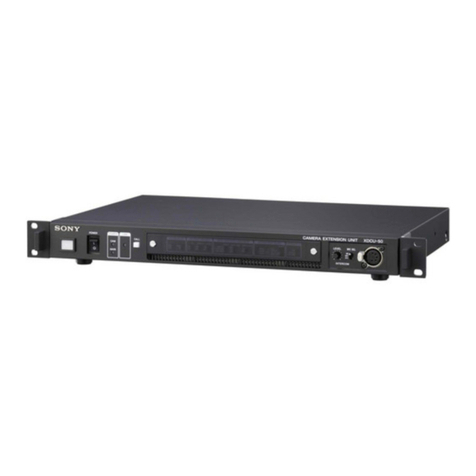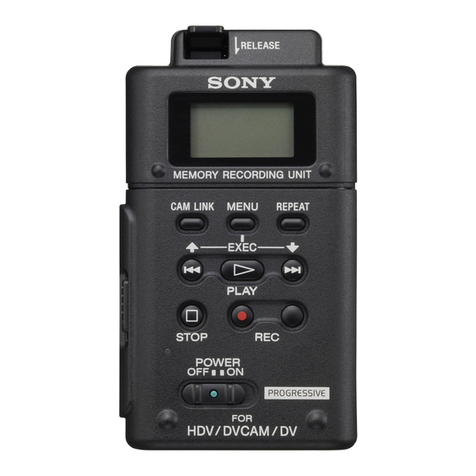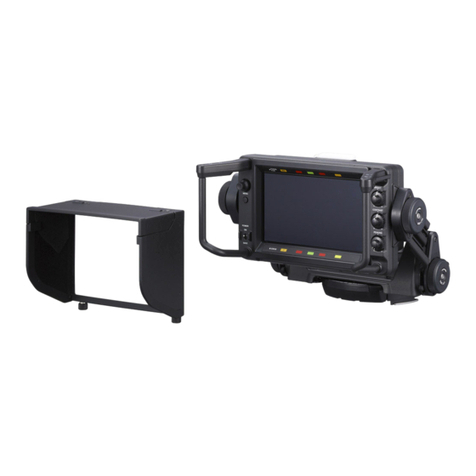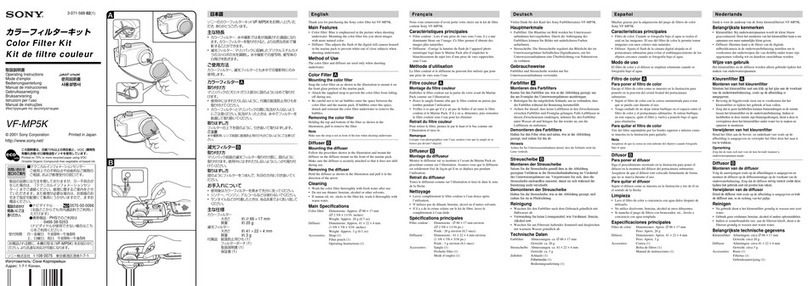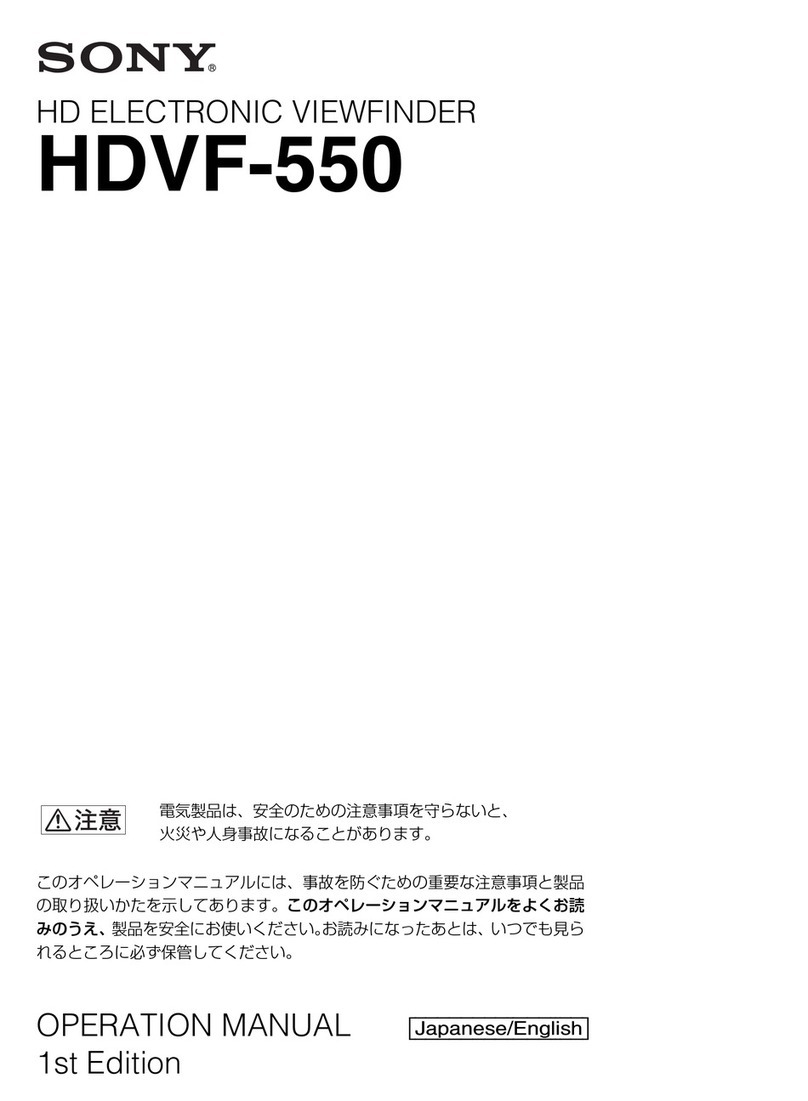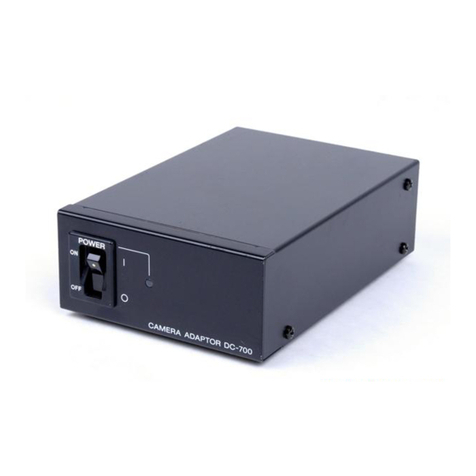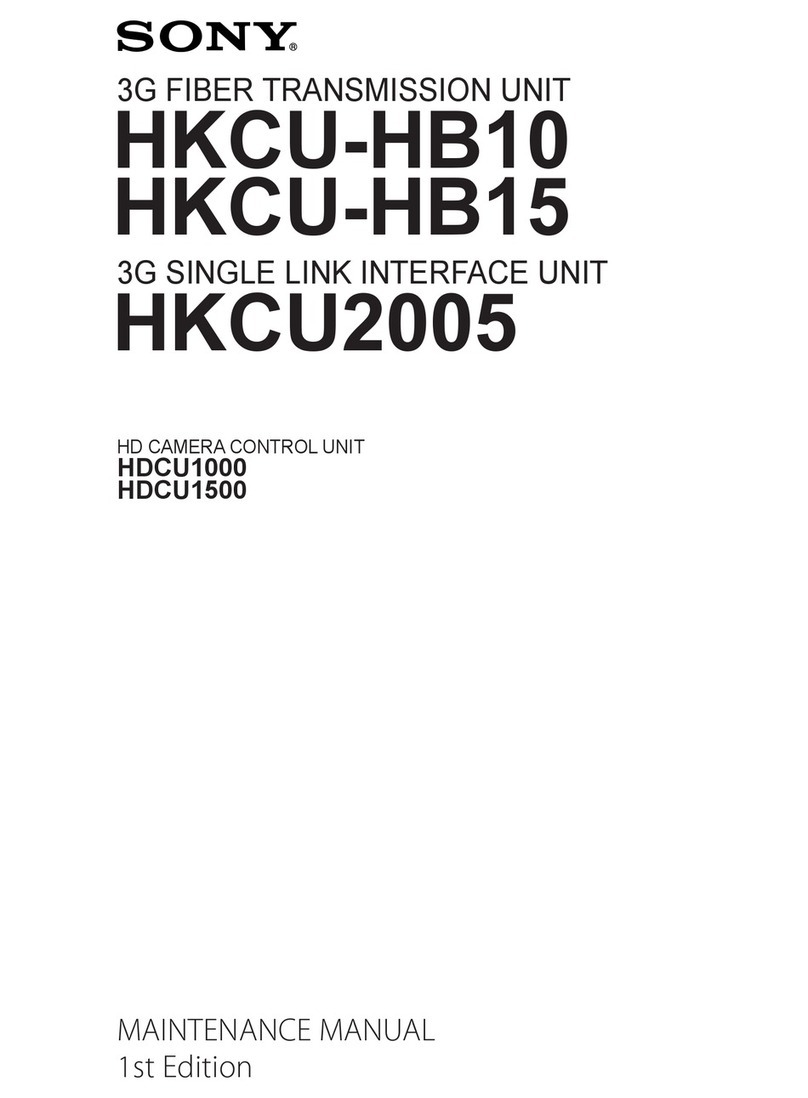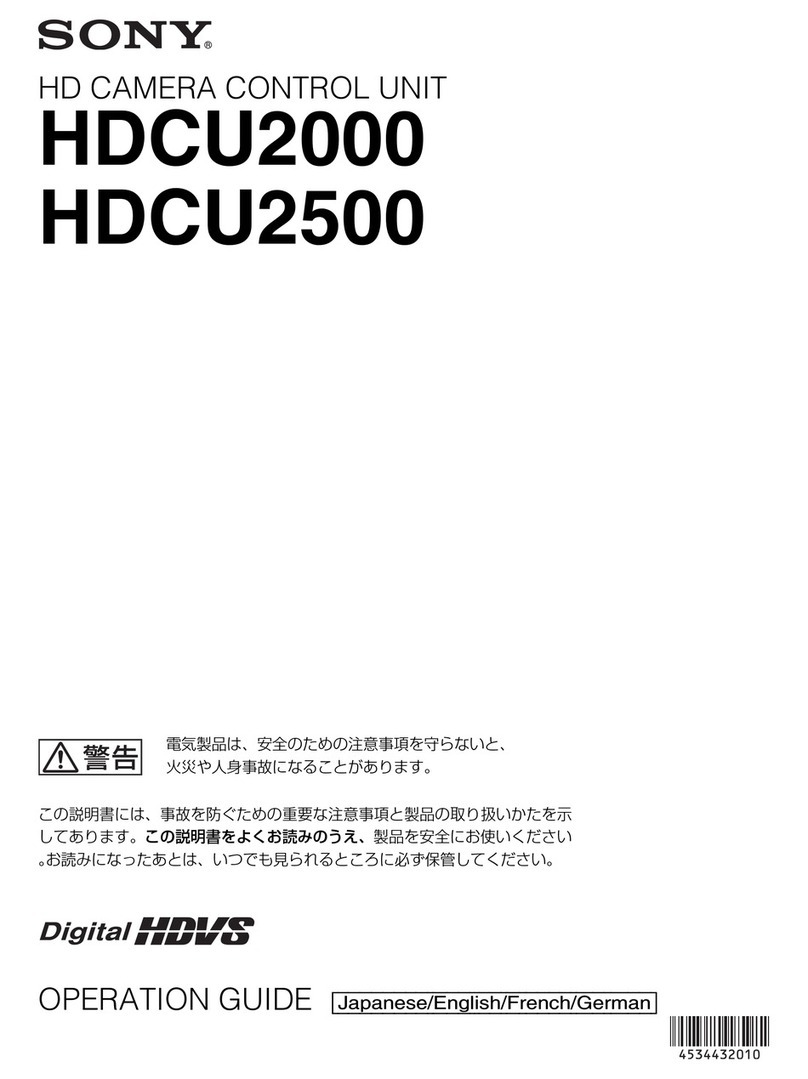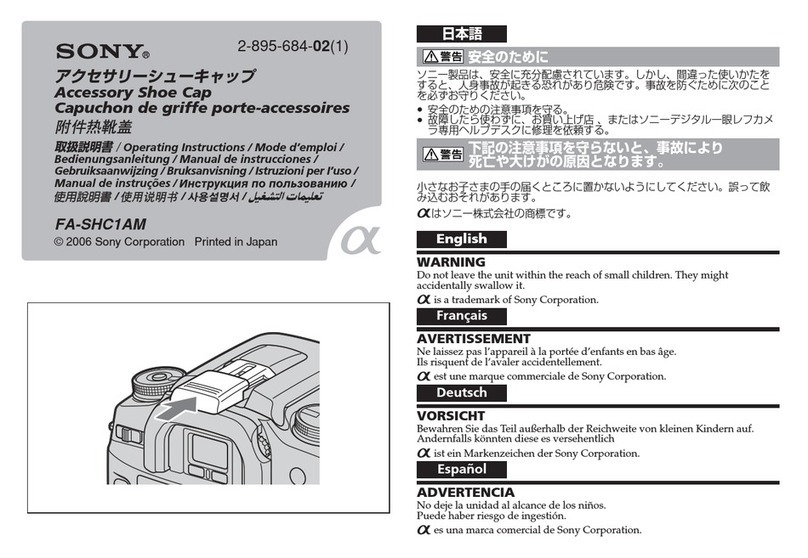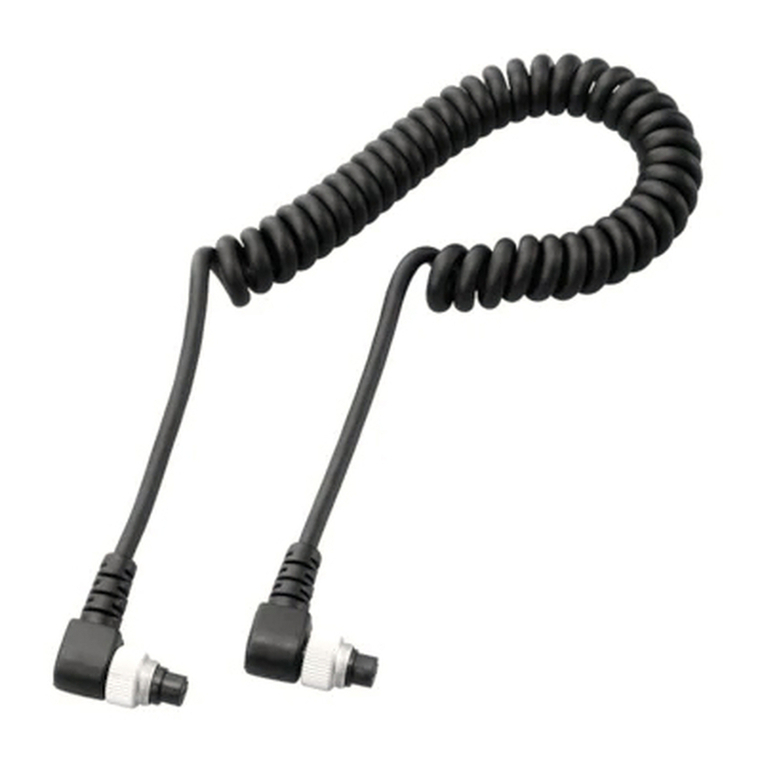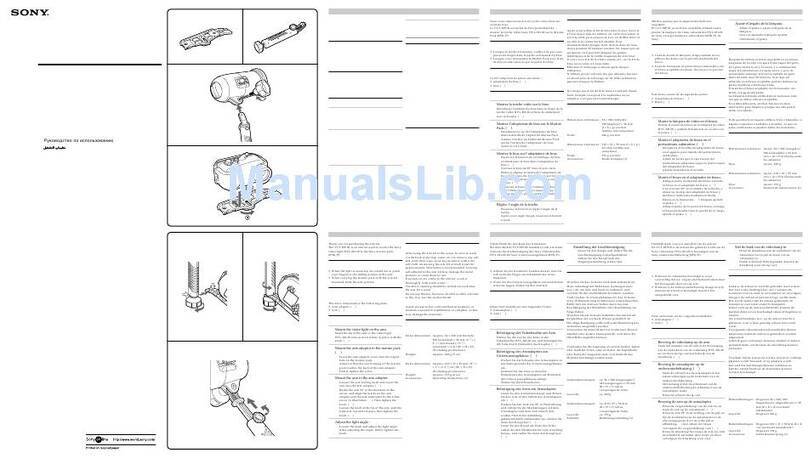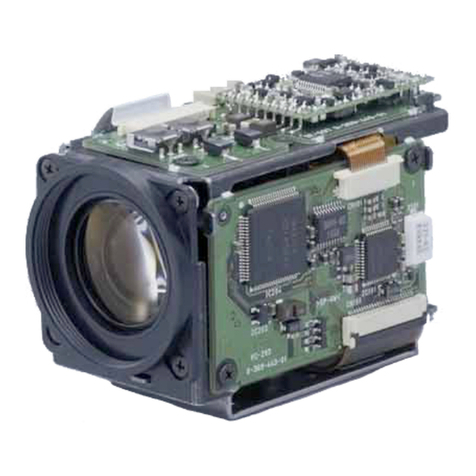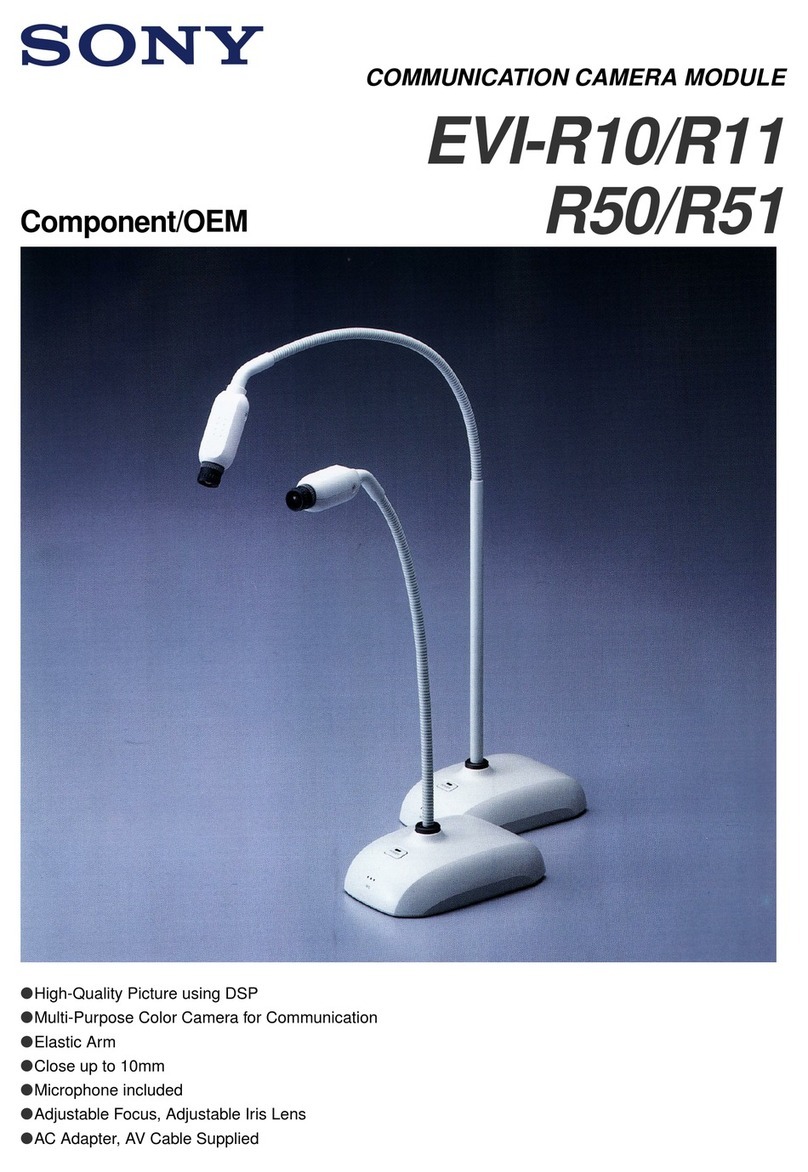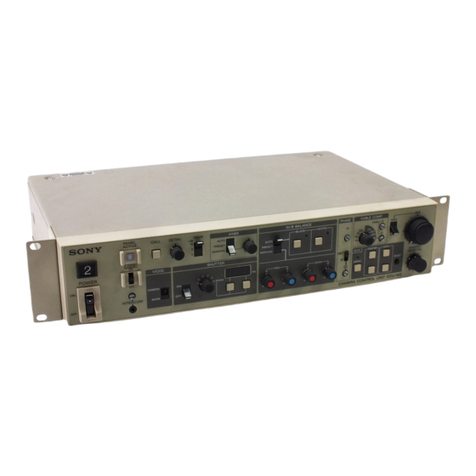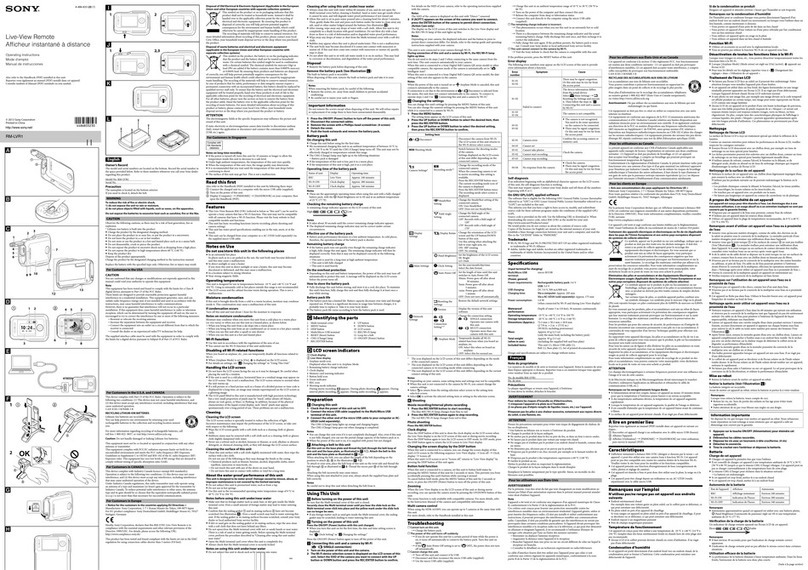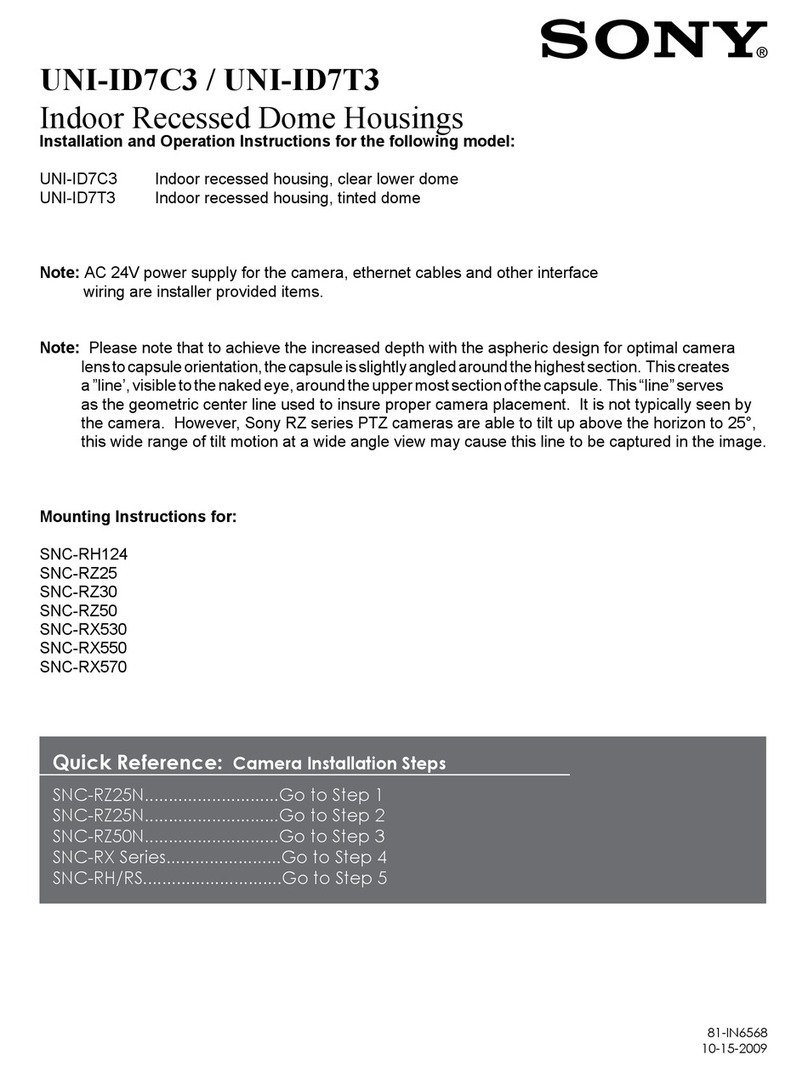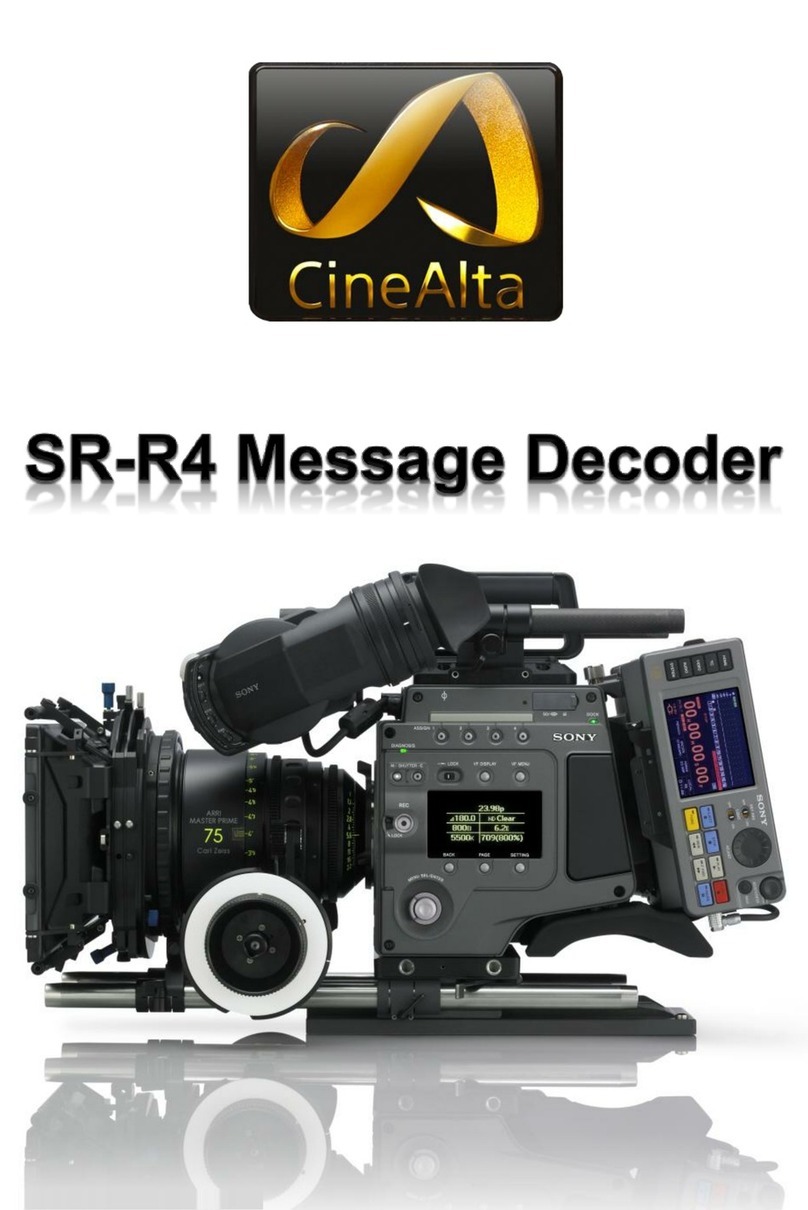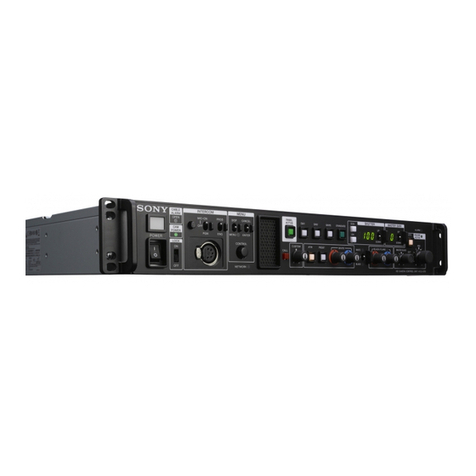
I
IM
MA
AG
GE
ER
RE
EV
VE
ER
RS
SI
IN
NG
GC
CI
IR
RC
CU
UI
IT
T_
__
__
__
__
__
__
__
__
__
__
__
__
__
__
__
__
__
__
__
__
__
__
__
__
__
__
__
__
__
__
__
__
__
__
__
__
__
__
__
__
__
__
__
__
_
The image reversing circuit is mounted inside the housing. The circuit reverses
(flips) the image and words on the LCD screen so that when the image is reflected in the
external mirror, it appears correct left-to-right.
Secure the camera to the tray and partially slide the camera and tray inside the
housing so you can then connect the cable from the reversing circuit to the blue LANC
port on the camera. The reversing circuit will automatically turn ON when connected to
the camera and the camera is ON; the image and words in the LCD screen will appear in
reverse.
O
On
n/
/O
Of
ff
fS
Sw
wi
it
tc
ch
h
An on/off switch is featured on the reversing circuit. Use the photo control on the
housing to access the on/off switch on the circuit. The circuit will automatically turn ON
when connected to the camera and the camera is ON.
When turning the camera OFF, there is a 5-minute standby power down delay on
the camera that occurs when the reversing circuit is ON during power down. Therefore
to avoid the 5-minute power down delay, turn the camera OFF and also turn the circuit
OFF to power down the camera immediately.
F
Fu
un
nc
ct
ti
io
on
ns
sL
Lo
oc
ck
ke
ed
dO
Ou
ut
t
When the reversing circuit is ON, some camera functions such as Auto Focus to
Manual may be locked out. To switch between auto and manual focus, temporarily turn
the circuit OFF, change the function on the camera, and then turn the circuit back ON.
F
FI
IN
NA
AL
LP
PR
RE
EP
PA
AR
RA
AT
TI
IO
ON
N_
__
__
__
__
__
__
__
__
__
__
__
__
__
__
__
__
__
__
__
__
__
__
__
__
__
__
__
__
__
__
__
__
__
__
__
__
__
__
__
__
__
__
__
__
__
__
__
__
__
__
_
Remove the lens cap and cord from the camera. Otherwise, they may interfere with
the housing seal.
The camera's auto focus feature is utilized underwater. For best results, move in
close to your subject and use the wide angle range to shoot thru as little water as
possible. The full zoom range is accessible underwater.
Turn the camera’s built-in flash OFF. Chart shows recommended initial settings
underwater.
W
WH
HI
IT
TE
EB
BA
AL
LA
AN
NC
CE
E_
__
__
__
__
__
__
__
__
__
__
__
__
__
__
__
__
__
__
__
__
__
__
__
__
__
__
__
__
__
__
__
__
__
__
__
__
__
__
__
__
__
__
__
__
__
__
__
__
__
__
__
__
__
__
_
Initially set the white balance to Auto. The housing features a white balance control
to change the setting.
C
Co
ol
lo
or
rF
Fi
il
lt
te
er
r:
:When using the color filter (during the day), set camera white balance to
Indoor for 0-15 foot depth. For 15-80 foot depth, set white balance to Outdoor.
V
Vi
id
de
eo
o-
-L
Li
it
te
e:
:When using optional Video Lite at NIGHT, set the camera white balance to
the Indoor position. During the DAY, use the Outdoor setting for subjects beyond 4-5
feet and the Indoor setting for closer subjects.
C
CA
AM
ME
ER
RA
AS
SE
ET
TT
TI
IN
NG
G
Power On/Off – Camera (On)
Zoom Lever – Wide Angle Setting
Focus – Auto Mode
Exposure – Auto Mode
Auto Lock – Center Position
Program AE – Auto Mode
Shutter Speed – 1/60 Normal
White Balance – Auto Mode (see section)
Steady Shot – Off
Built In Flash – Off
I
IN
NS
ST
TA
AL
LL
LA
AT
TI
IO
ON
N
C
CA
AM
ME
ER
RA
AT
TR
RA
AY
Y_
__
__
__
__
__
__
__
__
__
__
__
__
__
__
__
__
__
__
__
__
__
__
__
__
__
__
__
__
__
__
__
__
__
__
__
__
__
__
__
__
__
__
__
__
__
__
__
__
__
__
__
__
__
__
__
__
_
Note the placement of the camera tray underneath the guides; slide the camera tray
out of the housing.
Place the camera between the stabilizing pins on the tray and secure with the tripod
mounting bolt. The camera should fit easily on the tray and should be parallel with the
sides of the tray.
Unfasten the velcro on the camera hand strap and leave the padded flap UP.
Extend the camera's viewfinder half-way to the rear position. When the back plate
is secured to the housing, the camera's viewfinder will be pushed forward slightly while
remaining as close as possible to the Super-Eye on the back plate.
I
IN
NS
SE
ER
RT
TI
IN
NG
GT
TH
HE
EC
CA
AM
ME
ER
RA
A_
__
__
__
__
__
__
__
__
__
__
__
__
__
__
__
__
__
__
__
__
__
__
__
__
__
__
__
__
__
__
__
__
__
__
__
__
__
__
__
__
__
__
__
__
__
__
_
Pull the housing controls out to provide clearance for the camera. Slowly slide the
camera tray (with camera mounted) back into the housing. As the camera slides into
the housing, make sure the wide angle lens fits into the port recess in the front of the
housing. Also connect the image reversing circuit to the blue LANC port on the camera.
D
DO
ON
NO
OT
Tforce this installation; if the controls are out of the way and everything
is lined up properly, the camera and tray will fit easily inside. Make certain that the tray
is completely in the housing.
H
HO
OU
US
SI
IN
NG
GC
CO
ON
NT
TR
RO
OL
LS
S_
__
__
__
__
__
__
__
__
__
__
__
__
__
__
__
__
__
__
__
__
__
__
__
__
__
__
__
__
__
__
__
__
__
__
__
__
__
__
__
__
__
__
__
__
__
__
__
__
__
__
_
Slide the housing controls back in place making sure they properly align with the
camera functions.
Operate each control to see how it works with the camera. Some controls such as
start/stop will be used frequently. Other controls may seldom be utilized. Refer to your
camera owner's manual for the proper function of each camera control. Look thru the
back to be sure that you can see into the viewfinder.
When using the housing controls, especially the start/stop, D
DO
ON
NO
OT
Tuse excessive
force because you could damage the camera.
M
MA
AN
NU
UA
AL
LF
FO
OC
CU
US
SO
OP
PE
ER
RA
AT
TI
IO
ON
N_
__
__
__
__
__
__
__
__
__
__
__
__
__
__
__
__
__
__
__
__
__
__
__
__
__
__
__
__
__
__
__
__
__
__
__
__
__
__
__
__
__
__
_
Manual focus may be preferred in low light levels or when the subject possesses
little contrast. Set the focus switch to Manual to cancel the auto focus. If you want to
manually adjust the focus, rotate the manual focus control as desired. To reactivate the
auto focus, set the focus switch to Auto.
When the image reversing circuit is ON, the Auto Focus to Manual may be locked
out. To switch between auto and manual focus, temporarily turn the circuit OFF, change
the function on the camera, and then turn the circuit back ON.
C
CA
AU
UT
TI
IO
ON
N
If the housing controls are not properly positioned, they could interfere with the housing seal.
I
IK
KE
EL
LI
IT
TE
EU
UN
ND
DE
ER
RW
WA
AT
TE
ER
RS
SY
YS
ST
TE
EM
MS
S
50 West 33rd Street • PO Box 88100 • Indianapolis, IN 46208 USA • 317.923.4523
6037.95-04-0806






